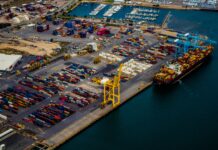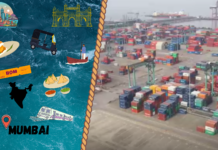
Maritime security is crucial for the stability of global trade, particularly in vital shipping corridors like the Bay of Guinea, the Red Sea and the Persian Gulf, which are integral to the movement of goods worldwide.
These areas, however, confront unique challenges and risks that could disrupt international commerce, including piracy, political instability, and state fragility.
A recent report by the United Nations Institute for Disarmament Research (UNIDIR) highlights the need for a new specialized agency within the UN to tackle increasing global maritime security concerns comprehensively, pointing out the current lack of a dedicated institutional framework.
Container News conducted a quantitative study assessing the maritime risk across these key shipping zones, using indicators such as connectivity, state fragility, and political stability.

The Bay of Guinea remains a high-risk area, with the Maritime Risk Index ranging from 0.61 to 0.63 between 2020 and 2022, and climbing to 0.64 in 2023. This uptick indicates escalating risks, underscored by ongoing issues like piracy, political unrest, and inadequate governance in neighboring nations such as Nigeria, Cameroon, and Ghana.
Conversely, the Red Sea has seen a slight improvement in its Maritime Risk Index, decreasing from 0.6 in 2020 to 0.58 in 2023. Despite this reduction, the region continues to face moderate risk levels due to persistent geopolitical tensions and activities of non-state actors, particularly near the Bab-el-Mandeb Strait.
The Persian Gulf has consistently registered the lowest Maritime Risk Index among the three regions, showing a decline from 0.55 in 2020 to 0.51 in 2023, indicating enhancements in regional stability and reduced risks linked to state fragility. This positive trend is likely due to increased regional collaboration, political stabilization in key countries like Saudi Arabia and the UAE, and efforts to diversify economies away from oil.

A comparative analysis of these regions reveals diverse maritime risk trends:
- Bay of Guinea: Exhibits the highest risk, with a recent increase highlighting the urgent need for enhanced security and governance.
- Red Sea: Although the risk is decreasing, the region’s ongoing vulnerabilities necessitate sustained security measures.
- Persian Gulf: Exhibits the most stability and consistent improvement, but must stay vigilant against potential geopolitical changes.
For policymakers, international entities and stakeholders in the private sector, it is vital to understand these dynamics to protect these essential maritime paths and ensure continuous global trade.





